3 releases
| new 0.1.2 | Apr 8, 2025 |
|---|---|
| 0.1.1 | Apr 8, 2025 |
| 0.1.0 | Apr 8, 2025 |
#79 in #ring
144 downloads per month
1.5MB
1.5K
SLoC
conhash-ring: Rust implementation of Consistent Hashing
Overview
This is a Rust implementation of consistent hashing, a technique used in distributed systems to distribute data across multiple nodes in a way that minimizes the amount of data that needs to be moved when nodes are added or removed.
This implementation serves as an educational example to demonstrate the concept of a consistent hash ring. It is not designed for production environments.
Features
- Support pluggable hash functions.
- Support virtual nodes: Each physical node can be represented by multiple virtual nodes to improve load balancing. Physical nodes contain real data, while virtual nodes contain key hashes.
- Support replication factor: Each key can be stored on multiple physical nodes to improve fault tolerance.
APIs
Checkout ConsistentHashingRing for more details.
Test case examples
Checkout test cases in src/lib.rs for more details.
Criteria is to maintain the replication factor r.
-
Adding a key: When a key is added, it is hashed to a position on the ring. The key is then stored on
rphysical nodes, starting from the position of the key's hash and moving clockwise around the ring. If 2 virtual nodes of the same physical are close to each other, the key will be stored on the first virtual node, then replicated to the next physical nodes -
Removing a key: Starting from the position of the key's hash, remove the
rkeys from both clockwise and anti-clockwise directions. -
Adding a virtual node: When a new node is added, keys are redistributed clockwise to the nearest virtual node belonging to a physical node that does not already store the key.
-
Removing a virtual node: When a node is removed, keys are redistributed anti-clockwise to the nearest virtual node belonging to a physical node that does not already store the key.
1. Add keys
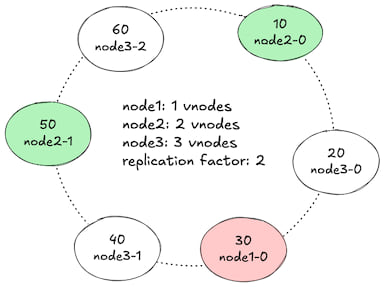

2. Remove a key
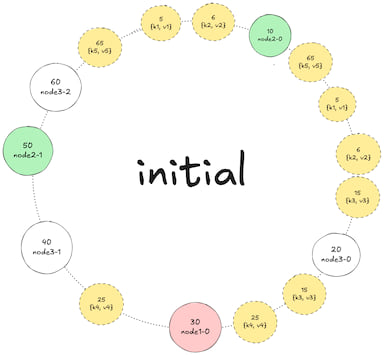
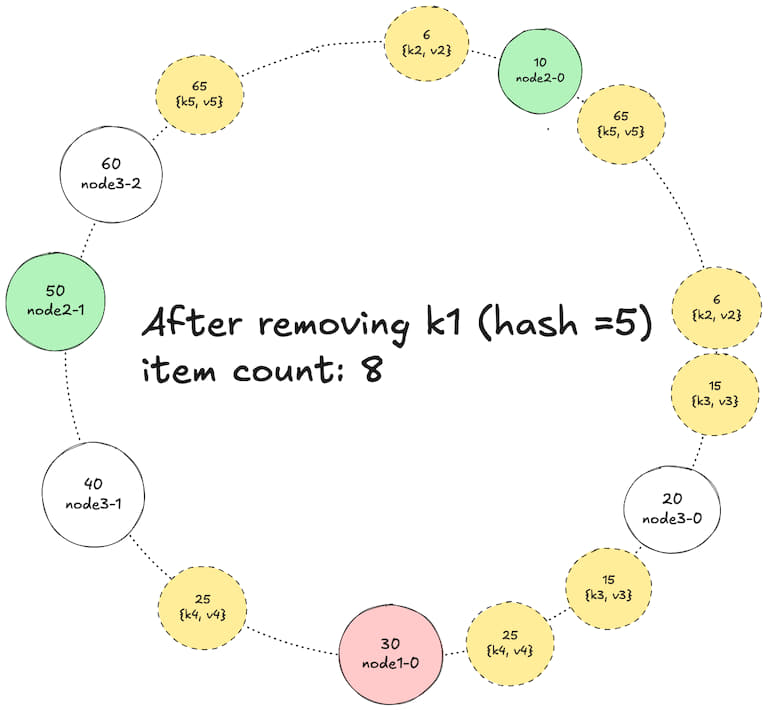
3. Removing node 2 (with 2 vnodes)

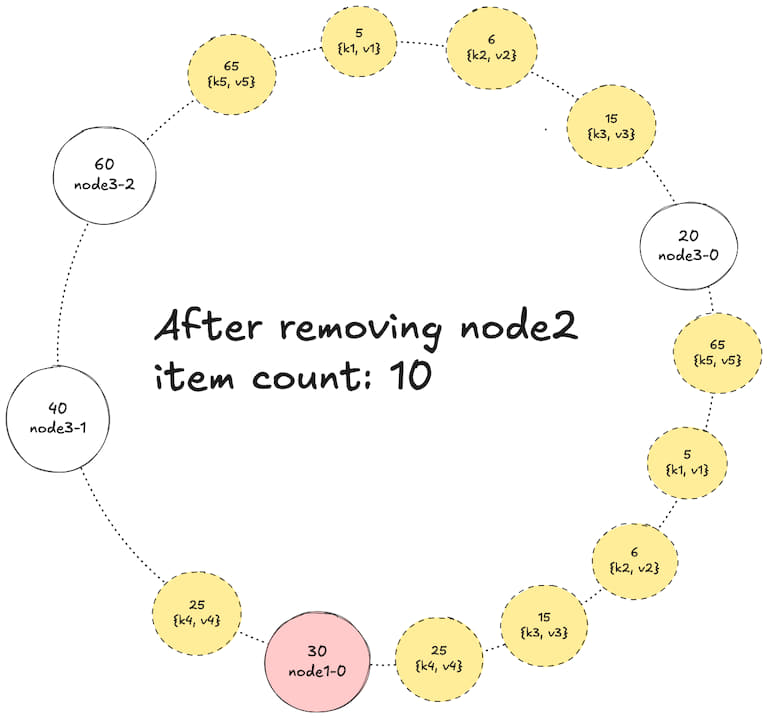
4. Adding 1 vnode (hash = 70) to node 1

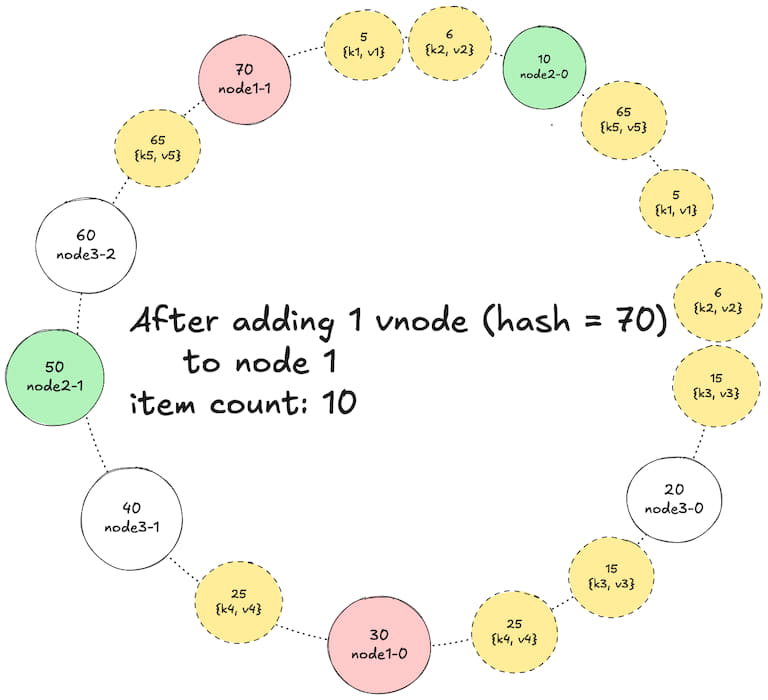
5. Reducing node 3 vnodes to 1

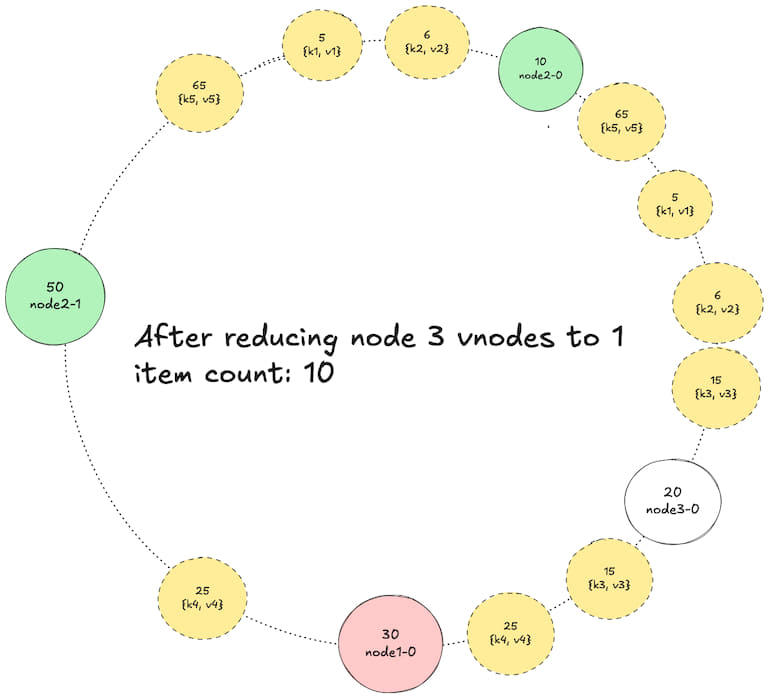
6. Increasing node 1 vnodes to 3

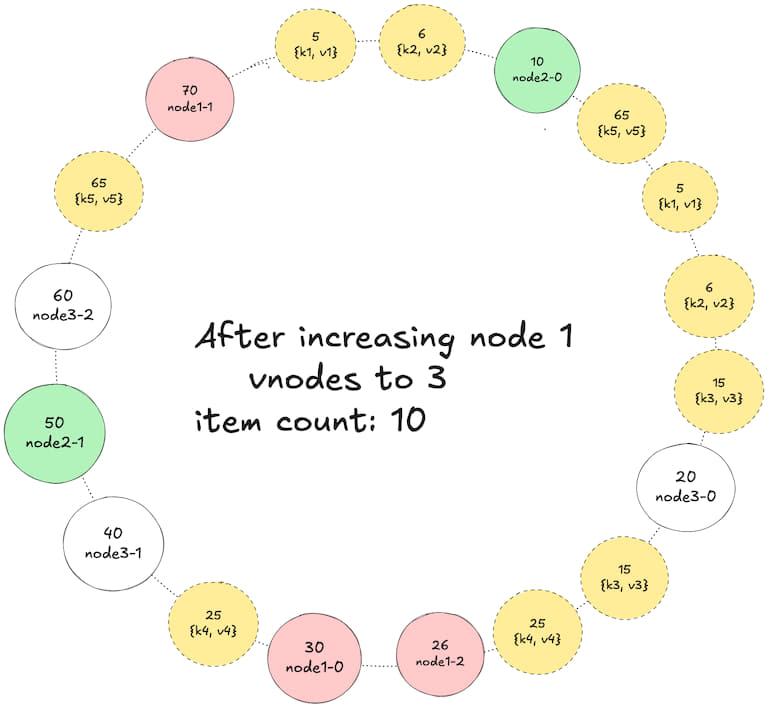
Dependencies
~5–11MB
~134K SLoC